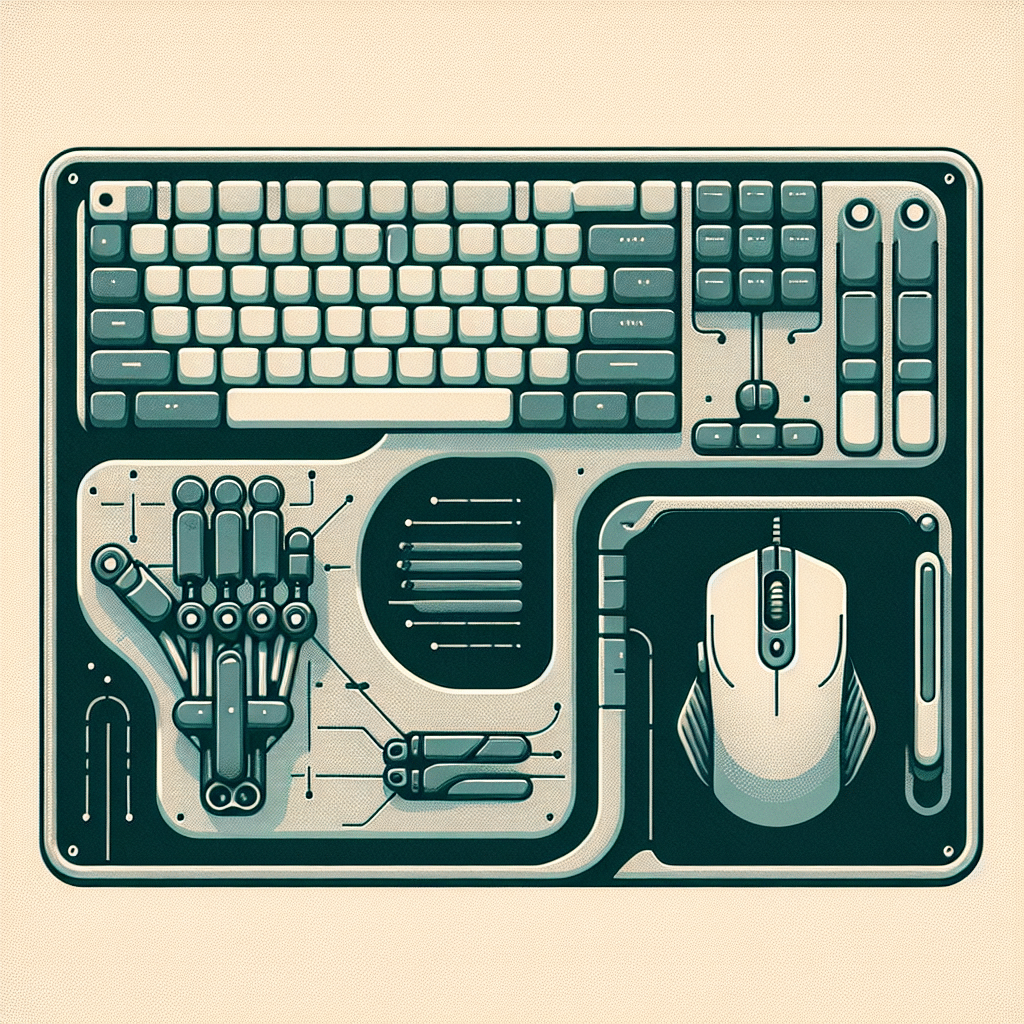Understanding Ergonomics in Keyboard and Mouse Setup
Importance of Ergonomics
Ergonomics refers to the science of designing the workspace and tools to fit the user, thereby enhancing comfort, productivity, and efficiency. A well-designed ergonomic keyboard and mouse setup can reduce the risk of repetitive strain injuries and improve overall work experience.
Key Considerations for Ergonomic Setup
-
Posture
- Sitting Position: Sit with your back straight and shoulders relaxed but not slouched. Keep your feet flat on the floor and knees at or slightly below hip level.
- Forearm Position: Your forearms should be parallel to the floor or slightly declined. Avoid reaching too far for your keyboard or mouse.
-
Keyboard Placement
- Height: The keyboard should be positioned at elbow height, which allows your forearms to stay level.
- Tilt: A flat keyboard helps maintain a neutral wrist position. If using a tilt, ensure it is minimal to prevent wrist strain.
- Distance: Keep the keyboard about 1-2 inches away from the edge of your desk, promoting natural hand movement.
-
Mouse Positioning
- Alignment: The mouse should be on the same surface as the keyboard to prevent rotating your wrist.
- Distance: It should be within easy reach, typically placed next to the keyboard.
Choosing an Ergonomic Keyboard
-
Design Types
- Split Keyboards: These separate the left and right sides, reducing wrist strain by allowing a more natural arm position.
- Tented Keyboards: A tilted shape raises the center of the keyboard, keeping the wrists straight.
- Concave and Convex Designs: These keyboards offer a more natural arc that accommodates the shape of your fingers.
-
Key Features
- Key Sensitivity: Choose a keyboard that offers tactile feedback, which can enhance typing accuracy and reduce effort.
- Customizable Keys: Some ergonomic keyboards allow you to reassign keys, improving functionality.
-
Material and Build
- Wrist Support: Consider models with built-in wrist rests or invest in separate wrist supports.
- Durability: Ensure the keyboard is robust enough for long-term use without wear that could cause discomfort.
Selecting an Ergonomic Mouse
-
Mouse Types
- Vertical Mouse: This design encourages a handshake position that keeps the wrist in a neutral position.
- Trackball Mouse: These reduce wrist movement as you roll the ball to move the cursor, minimizing repetitive strain.
- Pen-style Mouse: Ideal for precision tasks, offering a comfortable grip and reduced wrist strain.
-
Size and Weight
- Hand Size Fit: Choose a mouse that fits your hand comfortably. A mouse that is too small or too large can lead to gripping issues that cause fatigue.
- Weight Adjustability: Some models allow you to adjust weight, providing personalized comfort during longer usage sessions.
-
Button Configuration
- Programmable Buttons: Extra buttons can be particularly useful for quick access to frequently used software functions.
- Sensitivity Settings: Adjustable DPI settings allow you to tailor cursor speed to reduce unnecessary arm movement.
Accessories to Enhance Ergonomics
-
Wrist Rests
- Material Choices: Gel, foam, or memory foam options provide cushioning for wrists during typing.
- Height Compatibility: Ensure the wrist rest aligns height-wise with the keyboard to maintain a neutral wrist position.
-
Footrests
- Footrests can improve overall posture by correctly positioning your legs and relieving pressure from your back.
-
Monitor Stand
- Align your monitor so the top is at or just below eye level. A monitor stand can help achieve the correct height, reducing neck strain.
Best Practices for Ergonomic Setup
-
Regular Breaks
- Implement the 20-20-20 rule: every 20 minutes, look at something 20 feet away for 20 seconds. Additionally, stand, stretch, and move every hour.
-
Proper Desk Height
- Ensure your desk height allows you to maintain an optimal arm and wrist position while working.
-
Cable Management
- Keep cables organized to minimize clutter and ensure efficient movement around your workspace.
-
Lighting
- Use adequate lighting to reduce eye strain. Task lighting directly on workspaces can also improve focus.
Evaluating Your Setup
-
Self-Audit
- Take note of any discomfort during or after using your keyboard and mouse. Adjust your setup accordingly.
-
Seek Expert Advice
- If persistent pain occurs, consult with an ergonomics expert or physical therapist who can provide tailored adjustments and recommendations.
-
Trial and Error
- Ergonomics can be subjective; what works for one person may not work for another. Be prepared to experiment with different setups.
Conclusion
By implementing these ergonomic principles in your keyboard and mouse setup, you can create a more comfortable and efficient workspace that promotes well-being and productivity. Prioritize your comfort and make adjustments when needed, ensuring a sustainable work environment.
